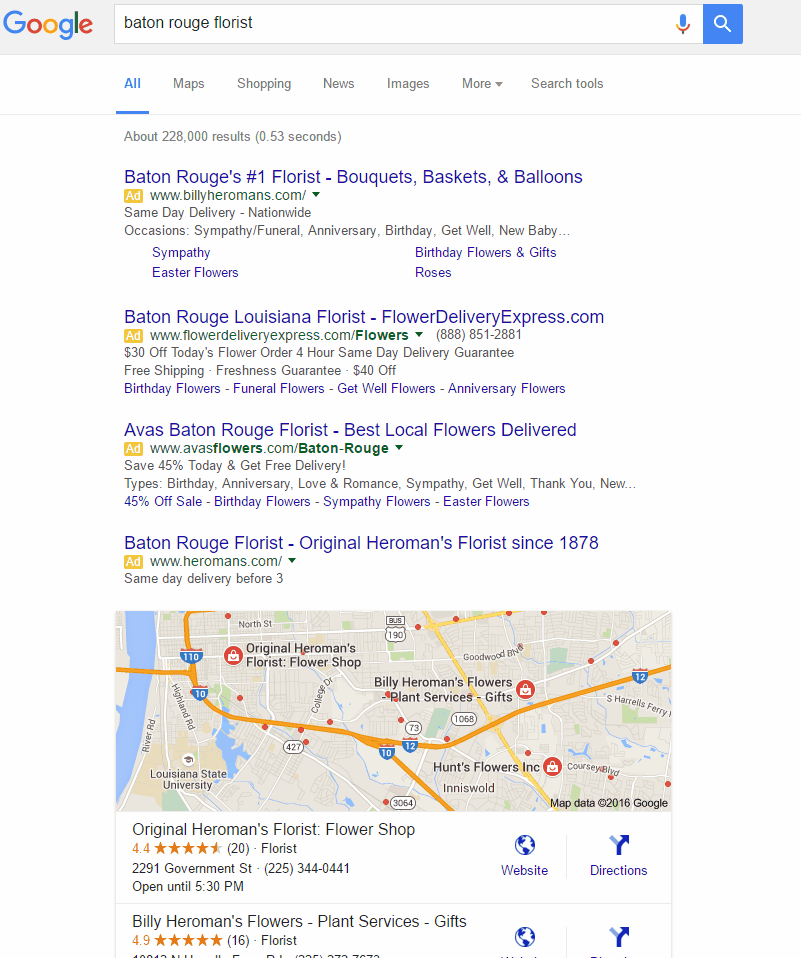The Ever-Changing Google SERP
Written by Brad Blackburn
onThursday, March 24th, 2016
in Marketing, Search
Google Changes How They Position Paid Advertising
If there is one thing that will never change when it comes to Google’s Search Engine Result Page (SERP) it’s the fact that it is always changing. With the most recent change, we will no longer see paid ads on the right-hand side of the page. Now you will see up to 4 ads at the top and up to 3 ads at the bottom of the page; so up to a maximum of 7 ads on the page.

What does this mean to those of us who are utilizing AdWords? Well, the jury is still out on that; however, it could very likely mean that we’re going to see the cost per click go up. In the past, advertisers were okay with sitting at the 5th or 6th position and having their ads show on the side, as they still received good exposure. Now, with those 5th and 6th positions moving to the bottom of the page, I suspect we’ll see those advertisers work on pushing their way into the top 4 positions. If that happens, then those of us who are already working to keep that position will end up spending more to try and retain our position.
If the cost per click does increase, we will need to be even more selective with our keyword selection as the competition rises. Since we’ll be paying more per acquisition we may need to end up trimming some of the fat to keep our campaigns running well. This also means that advertisers will need to work even closer with the SEO team to make sure that they are targeting keywords that have been trimmed out due to rising costs.
Another scenario, while less likely, is that costs will either remain the same or slightly drop off. The only instance where this makes sense is if the majority of people who were aiming for the side ads in the past end up deciding they cannot afford to pay more to increase their position and either accept being at the bottom of the page or pull their ads.
How it ends up playing out will almost definitely vary from market to market. With that being said, it’s been around a month since the changes started to roll out and so far I’ve only seen significant changes in a few accounts; and those were mostly in fairly competitive markets, so that doesn’t surprise me. As for now, we just have to wait and see how it all plays out.
